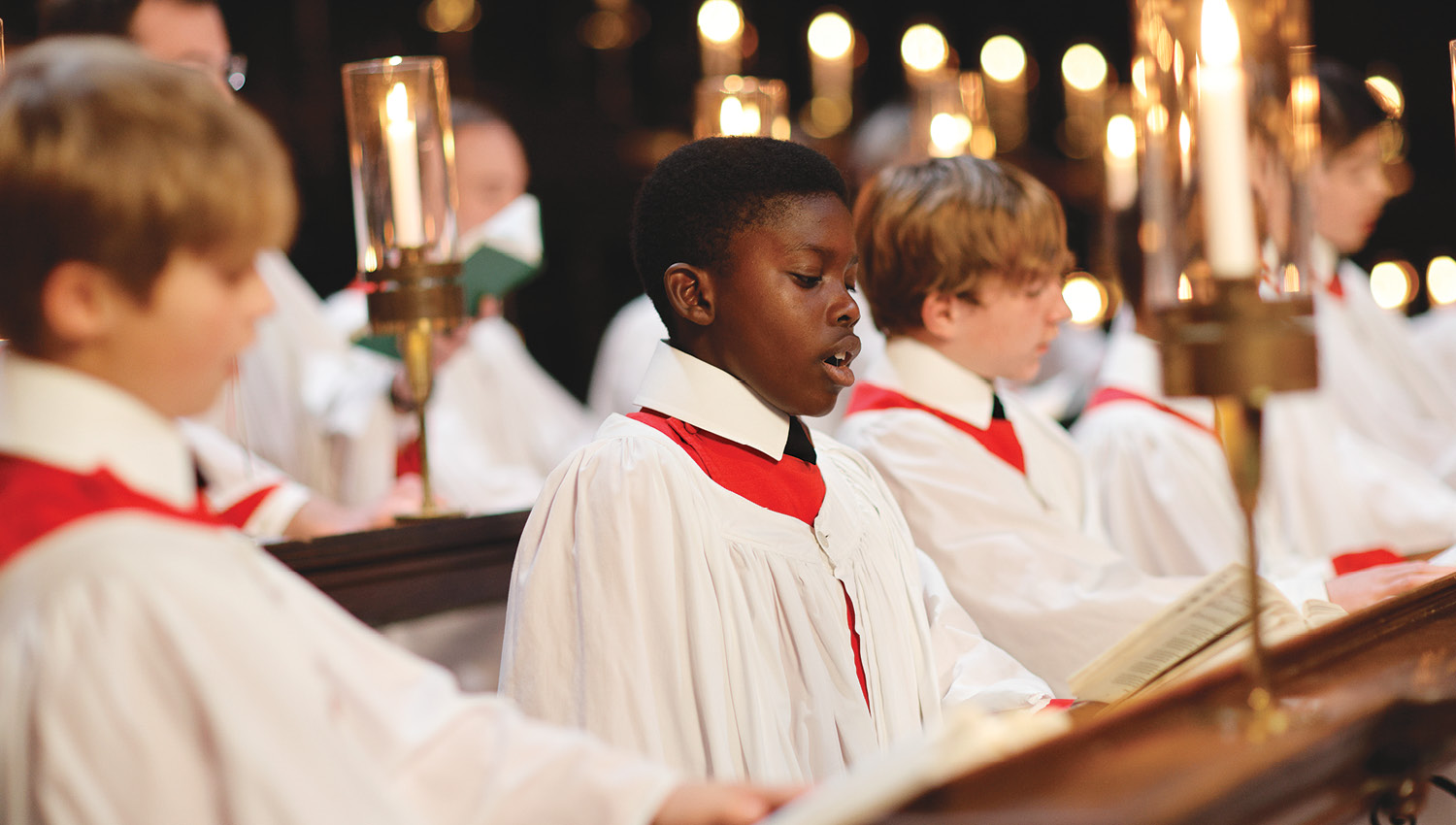The Choir of King’s College Cambridge treated Sydney to two nights of English choral music – first in the City Recital Hall, and then to a packed audience in the Sydney Opera House.
One might have thought the Concert Hall too vast a space for the delicate timbre of the Choir. That was not so. The programming for the second concert perhaps deliberately featured more forceful repertoire.
First was Handel’s famous anthem Zadok the Priest. Making excellent use of space, the instrumental opening was performed not on an unassuming Klop continuo organ, but on the Concert Hall’s majestic pipe organ. The swell was used to great effect to build up to the choral opening. That opening was lighter and more delicate than was expected which gave a refreshingly new edge to this piece.
Then we stepped back in time with Gabrieli’s O magnum mysterium. The phrasing is typical of the golden age of the Venetian Baroque repertory, and of the early Baroque more generally. We have rapid and rather stark changes between major and minor, between light and shade, which gives a delicious chiaroscuro effect. Daniel Hyde had the choir perform at a fittingly meditative pace. He brought out the dance element well in the closing ‘Alleluia’. It’s a shame that there was not more of this music.
But one of the great things about this performance was that it did not focus exclusively on the choir. It gave a chance for the two organ scholars – Harrison Cole and Paul Greally. First was Greally, who performed Messiaen’s Les Anges, from La Nativite du Seigneur. This is a piece which can easily be played mechanistically, in a way that deprives it of any interest. But Greally clearly had a conception of the “idea” or spirit underlying this unwieldy and otherwise formless piece; he made it his own. There are some fun changes in metre that keep the audience on the edge of their seats.
The pattern that emerges is a change from the grotesque to the sublime. Lauridsen’s O Magnum mysterium is not as form-shattering. It looks back, in a way, to Gabrieli, but it is not as busy. The effect is ethereal and calm, and it seems this piece was made for this Choir.
Cole then performed Messiaen’s Transports de joie from L’Ascension. This was a real virtuosic showpiece. We are not too far from the liturgical soundworld; plainsong is embedded deep in Messiaen’s works, and Cole traverses most emotions in the space of a few minutes. One gets the impression of a struggle between light and darkness throughout.
Again, after a riotous cacophony of wind, we have Bainton’s ethereal And I Saw a New Heaven – a nod to the Antipodes. Consistent with that theme was Damian Barbeler’s Charlotte, commissioned especially for this tour, and based on Judith Crispin’s moving poetic depiction of her journey of self-discovery as a First Nations woman. One chorister in particular sang difficult high notes with incredibly crystalline precision, especially in the eerie duets with altos. As the piece ends with a visceral affirmation of self, each singer throws a blank piece of paper onto the stage.
